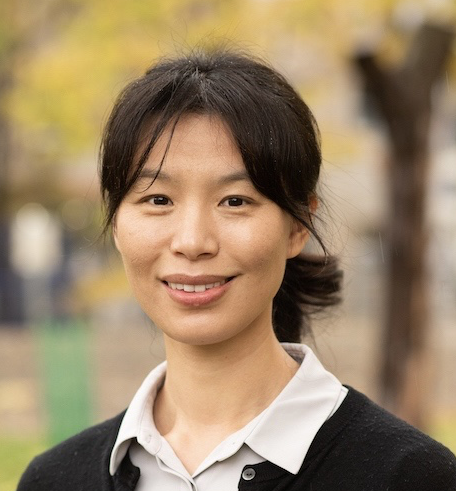Title: Associate Professor
Country/Region: Canada
Period: 2024/7/2-2024/12/30
Theme: Interplay between fault slip, stress and fluids on Gofar transform fault, East Pacific Rise
Host: Nobuki KAME
Introduction: Dr. Yajing Liu received her BSc in Geophysics from Peking University in 2001 and PhD in Earth and Planetary Sciences from Harvard University in 2007. She was a Harry Hess Postdoctoral Fellow at Princeton University, 2007-2009, and an Assistant Scientist at Woods Hole Oceanographic Institution 2009-2011. She is currently an Associate Professor in the Department of Earth and Planetary Sciences at McGill University, and a Canada Research Chair in Earthquake Seismology. Her research focuses on integrating field observation and numerical simulation to understand the source processes of earthquakes and slow slip events.
Research Report:
Oceanic transform faults (OTF) that offset mid-ocean ridges display a unique combination of earthquake
slip and aseismic creep (Boettcher and Jordan, 2004). With a fast spreading rate of ∼ 140 mm/yr and
5 to 6 years of magnitude M6 earthquake recurrence intervals, the Gofar transform fault of East Pacific
Rise provides a natural laboratory to study the complex interplay between fault slip, stress and fluids
through an earthquake cycle. Along Gofar, M6 earthquakes repeatedly rupture segments straddled by
rupture barrier zones that also experience abundant foreshocks and seismis swarms (McGuire et al.,
2012). Previous studies suggested that strong dilatancy strengthening effect in the Gofar West (G3)
rupture barrier zone, supported by an active-source seismic imaging study that indicates enhanced fluidfilled
porosity within the barrier segment (Roland et al., 2012), can effectively stabilize along-strike
earthquake rupture propagation (Liu et al., 2020).
slip and aseismic creep (Boettcher and Jordan, 2004). With a fast spreading rate of ∼ 140 mm/yr and
5 to 6 years of magnitude M6 earthquake recurrence intervals, the Gofar transform fault of East Pacific
Rise provides a natural laboratory to study the complex interplay between fault slip, stress and fluids
through an earthquake cycle. Along Gofar, M6 earthquakes repeatedly rupture segments straddled by
rupture barrier zones that also experience abundant foreshocks and seismis swarms (McGuire et al.,
2012). Previous studies suggested that strong dilatancy strengthening effect in the Gofar West (G3)
rupture barrier zone, supported by an active-source seismic imaging study that indicates enhanced fluidfilled
porosity within the barrier segment (Roland et al., 2012), can effectively stabilize along-strike
earthquake rupture propagation (Liu et al., 2020).
View All
Fiscal Year: 2024
Fiscal Year: 2024


